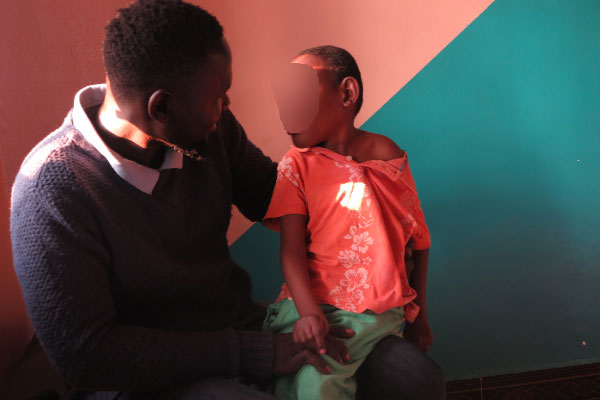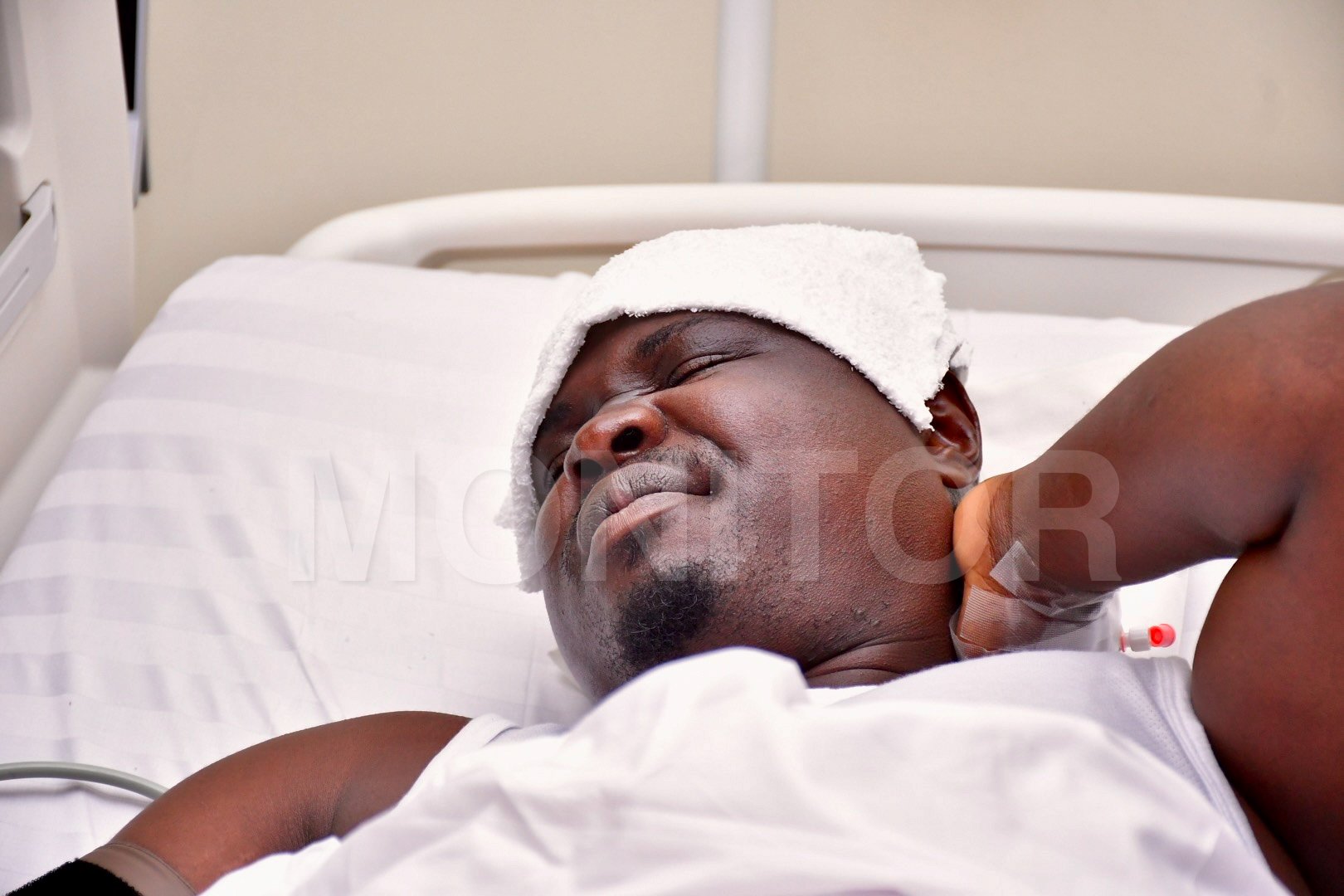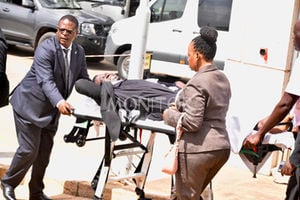Cerebral palsy always manifests after birth

Muscle tone, persistent relaxes, developmental delay in milestones are some of the clinical attributes for CP diagnosis PHOTO | GLORIA IRANKUNDA
What you need to know:
- It is, therefore, important to monitor developmental milestones and pay attention to any delay beyond the acceptable limits as this is a major indicator of whether the child has celebral palsy or not.
According to Dr Robert Sebunya, a paediatric neurologist at St Francis Hospital in Nsambya, Kampala, four out of 10 children have cerebral palsy (CP). However, this number is underestimated since most of the parents are limited by many factors to bring their children to hospitals.
He adds that the biggest number of cerebral palsy cases occur in the labour wards and the biggest cause is limited oxygen to the baby’s brain during birth.
Other causes include intra uterine infections in mothers during pregnancy which later affect the developing brain. Another is jaundice that happens after birth when the baby experiences yellowing of eyes which is harmful to the brain due to either blood incompatibility of the mother and the baby. Another cause is prematurity in babies, especially those born below 28 weeks and meningitis, among others.
According to Tonny Buni, an experienced physiotherapist and a guardian to John Masaba (a child with cerebral palsy), children with severe CP (in Uganda) are the most at risk of neglect. A child with spastic quadriplegia characterised by motor impairments affecting all four limbs with intellectual disability as an associated problem will have the least chances for surgical correction since they cannot afford the cost of stem cell therapy or sometimes, the parents think it is witchcraft.
Annet Nuwayo Matsiko and Vincent Matsiko were devastated when their first child, Albert Matsiko, was diagnosed with CP. Although all CT scans during pregnancy had showed her baby was okay, after delivery, the baby was taken to a neonatal ward with a report that he had a severe brain injury. Later, he was diagnosed with CP.
“It breaks my heart that today at five years of age, my son is unable to lift his hands or even recognise any of us. He cannot see, sit or even feed himself,” Matsiko narrates.
What is CP?
Dr Robert Sebunya, says CP is a group of permanent disorders of movement and posture causing activity limitation. It is attributed to a non-progressive disturbance that occurs to a developing brain. The disorder is often accompanied by disturbance in feeling, reasoning, perception, communication, behaviour, epilepsy and secondary neuromuscular problems.
A diagnosis of CP is done clinically although an MRI scan or CT scan can only be performed if the cause of CP is not clear or other causes have to be ruled out.
Muscle tone, persistent relaxes, preference of one hand to another, developmental delay in milestones are some of the clinical attributes used to make a CP diagnosis.
Prevalence
Buni says because of damage to the brain, a child with CP usually has other associated impairments including visual impairment, seizures and epilepsy, hearing impairment, speech and language disorders, intellectual disability, hip displacement and behavioural problems.
He adds that the nature of the impairment affects the child's potential to develop and learn through movement since poor development of motor skills affects the child's ability to interact with their parents and the surrounding environment.
“A child with CP lacks the ability to bear weight through different parts of the body, shift weight, maintain and move into and out of different positions and to perform isolated and variable movements with an appropriate degree of effort,” Buni says.
Most or all elements of function which include balance, coordination, flexibility, mobility, muscle performance, postural control, stability and neuromuscular control are impaired and, therefore, need to be trained as early as possible to be able to achieve a near normal independent function later in the child's development.
According to Buni, with wrong posture, it takes only two hours per day for a child with CP to deform. If the child has mixed/spastic cerebral palsy, they must sit straight or sleep on their stomach to avoid developing a curve on their back, especially during the day when muscles are active.
Care and management
Buni says CP always manifests shortly after birth but early signs such as irritability, poor feeding, asymmetric movement patterns and developmental delay, among others can be missed. It is, therefore, important to monitor developmental milestones and pay attention to any delay beyond the acceptable limits as this is a major indicator of whether the child has CP or not.
According to Buni, once there are deformations, a surgery can be done to reverse conditions such as hip displacement. Seizures are managed by medication.
Children with cerebral palsy should have therapy regularly. A lack of regular therapy leads to relapsing and body deformation.
There is also need for assessment by a therapist who will help the child achieve milestones.
A child with overactive nerves causing severe (abnormal muscle tightness due to prolonged muscle contraction) will benefit from cutting those nerves in a process called rhizotomy.
A child with a hip displacement will benefit from correction of the dysplasia which means that their confinement to the wheelchair will not be so painful.
A baclofen pump will help with spasticity and, therefore, improve quality of life. Surgically lengthening shortened muscles will improve mobility. Consistency in providing therapy is likely to improve quality of life.
Buni adds that it is important to note that CP is static and does not get better or worse but the physical manifestations of impairments caused by CP, if not managed, worsen as the child grows leading to severe disability.
After a CP diagnosis is given, close surveillance should be mandatory so as to identify risk factors for development and progression of musculoskeletal problems so that early intervention can be carried out to lessen the effects.
Occupational therapy
Patience Kyamazima, an occupational therapist, says occupational therapy includes therapeutic use of activities with the primary goal of enabling people participate independently in different activities.
According to Kyamazima, occupational therapists work with those living with physical, mental and social disabilities following the process of:
Screening, where the necessity of occupational therapy for a client is established, evaluation, where a thorough assessment is done to establish deficit areas, get knowledge about the medical history and baseline performance.
Other steps are intervention, where goals are set by the client and the strategies are set by the therapist to achieve the goals.
Dr Robert Sebunya, a paediatric neurologist, says counselling families of children with cerebral palsy is crucial since many men usually run away from their homes, leaving mothers to take care of the children.


